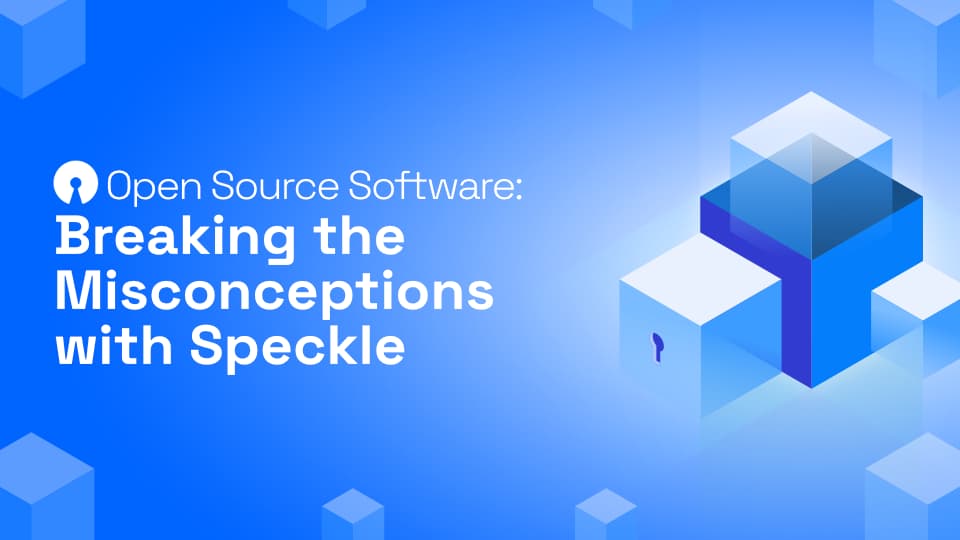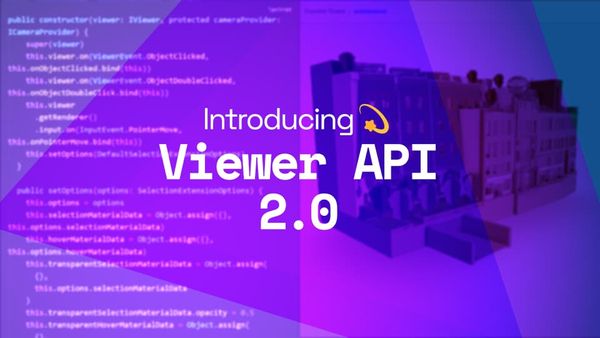We thought it was a matter of time to give our take on the meaning of Open Source in AEC. Here’s what it means to be Open Source and why we think it’s important in our industry today.
The Current State of Architecture, Engineering, and Construction (AEC)
The AEC industry is being held back because of the frictions that crippled the digital communicative processes. Since 1945, productivity in manufacturing, retail, and agriculture has grown by as much as 1,500 percent, but productivity in construction has barely increased at all, most projects being over budget and under schedule. The reality is that innovation in the construction industry tends to proceed one tiny, evolutionary change at a time.
In fact, the AEC industry is:
- Fragmented and not integrated: Data silos hamper collaboration and automation. Existing solutions are centralised and work against the collaborative nature of construction.
- Owned by legacy software monopolies: Pricey proprietary solutions with little to no adaptability and customisation, blocking innovation and data accessibility.
- Slow and opaque: Basic analytical needs are not met, data velocity is slow, communication is adversarial, and iterations are costly.
Additionally, treating software and automation tools as key differentiators leads to a fragmented and unfavorable industry to work in. Because of its fragmented nature, one way forward for the AEC industry is to enable and unblock innovation. At Speckle, we believe one way forward is to accept and trust the power of Open Source and use co-creation as the major fuel of innovation.
Driving The Future of AEC With Open Source
Open Source refers to a specific way of developing and distributing software, where the source code (the underlying instructions that make up a program) is made freely available to the public. This means that anyone can view, modify, and distribute the code without any restrictions.
This approach encourages sharing, collaboration, and innovation, as it allows others to examine and improve the software, leading to better and more reliable products. Additionally, Open Source Software (OSS), such as Speckle, comes with a license that ensures its continued availability as Open Source. This means it remains free and open for future generations to use and modify.
Hear from Speckle’s founders talking about the state of the evolution of Open Source since the 1980s:
Is Open Source Secure?
There is a popular belief that OSS, because it’s ‘open’, reduces data security. In reality, having more eyes on the code allows for better security, transparency, and longevity. The data is supportive of this as over 50% of the market’s database engines are Open Source to date.
OSS is eating the tech world. Linux, RedHat, IBM, Microsoft, and Google focus on collaborating and offering transparent OSS interoperability. By investing in delivering and supporting OSS, these tech companies extend their commercial interests, ensure a level playing field in key competitive areas, and gain market mindshare by promoting a more inclusive ecosystem. According to a Snyk survey, Open Source vulnerabilities fell by over 20% in 2020, defying the common misconception that Open Source is less secure.
::: tip Did You Know?
Some of the largest IPOs and acquisitions in the tech industry were represented by OSS-led companies. The facts speak for themselves - software is not a competitive advantage. It’s a means to deliver better solutions together.
:::
The Future of OSS
Being Open Source has greatly impacted how we operate at Speckle, and it’s a big part of our DNA. Our mission is to enable everyone to access, control, and connect with 3D data by trusting the growing AEC ecosystem as we manage Speckle, the open-source solution.
Fintech is as ever leading the way where partnerships are being established by major institutions with managed OSS projects like the Goldman Sachs-led FINOS foundation working with GitLab on Legend to define a common data exchange API model for use across the sector. The largest growth over the next 5 years in AI and ML will be led by OSS initiatives. Proprietary ML will start to ossify into niche sector specifics while the general thrust will be community and Open Source-driven.
By harnessing the collective strengths of diverse tools, we believe we can achieve the following:
- Unlimited Support: OSS communities encourage global contributors to share, engage, and troubleshoot together.
- Continued evolution: OSS resilience allows for continued evolution where we’ve seen companies such as FreeCAD, Blender, IFC.js enhance each other through data connectivity. There’s always room for open collaborations and software improvement.
- Promoting innovation, collaboration, and creativity: By collaborating freely, we can explore the potential of OSS together and unlock data connectivity, transparency, and knowledge sharing across various tools.
Open Source encourages a stronger focus on delivering value as opposed to reinventing the wheel. And this is what the AEC industry needs.
Subscribe to our newsletter to get access to more content like this.



